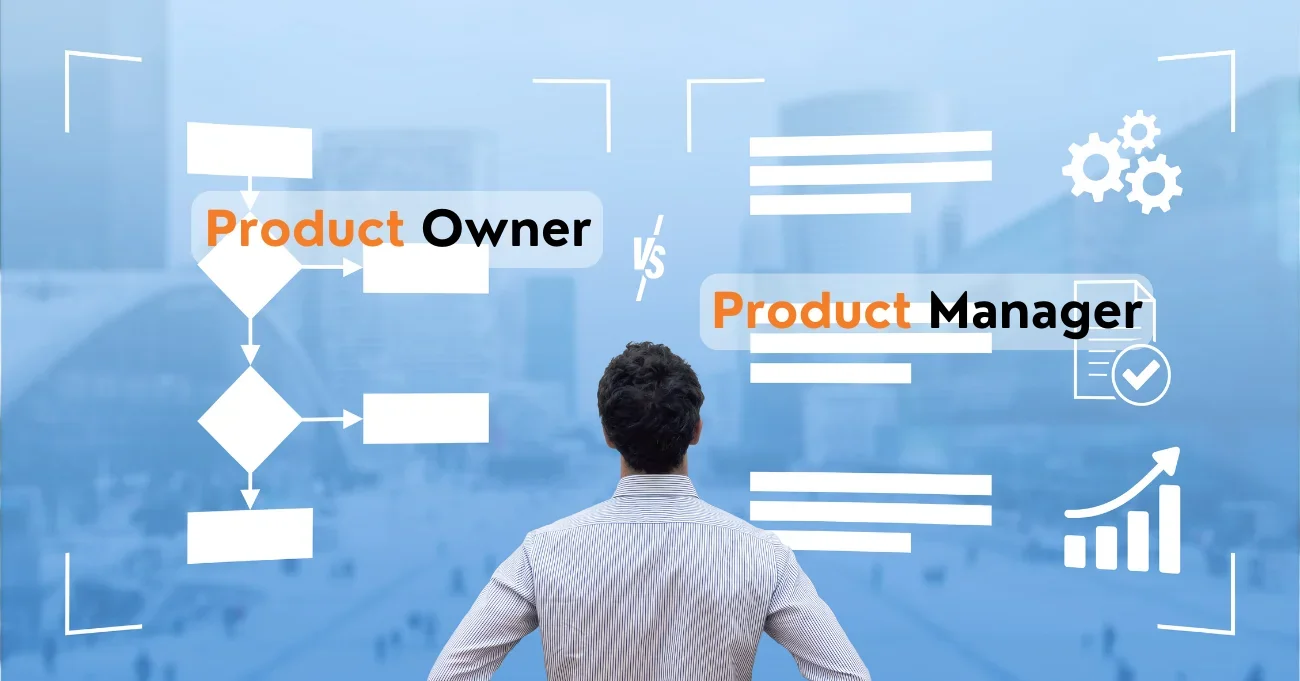In startups or small companies, a product manager is usually responsible for overseeing the product’s vision, strategy, and roadmap. However, as the company grows, having separate specialists is beneficial for better efficiency. While there is a distinct difference between product owner and product manager, the need for one or both roles comes down to the project's scope and complexity.
At Aloa, we provide clarity in product management responsibilities. Our dedicated U.S.-based product owner is there to guide you through our product journey. With our strong project management framework and top-notch development teams, we deliver high-quality software projects to keep everything smooth and on track.
Backed by our in-depth research and experience in software outsourcing, we’ve crafted this guide to help you navigate the key responsibilities, skills, and objectives of both roles. After reading, you’ll understand how these roles interact and how to work together toward a successful product launch.
Let’s dive in!
Understanding the Roles of Product Owner and Product Manager
The difference between product owner and product manager lies in their focus. Product managers work on strategy, marketing, sales support, and customer satisfaction. In contrast, product owners convert this strategy into actionable tasks, managing details and meetings, and testing. In smaller teams, a product owner also takes on strategic responsibilities.
Defining the Product Owner Role
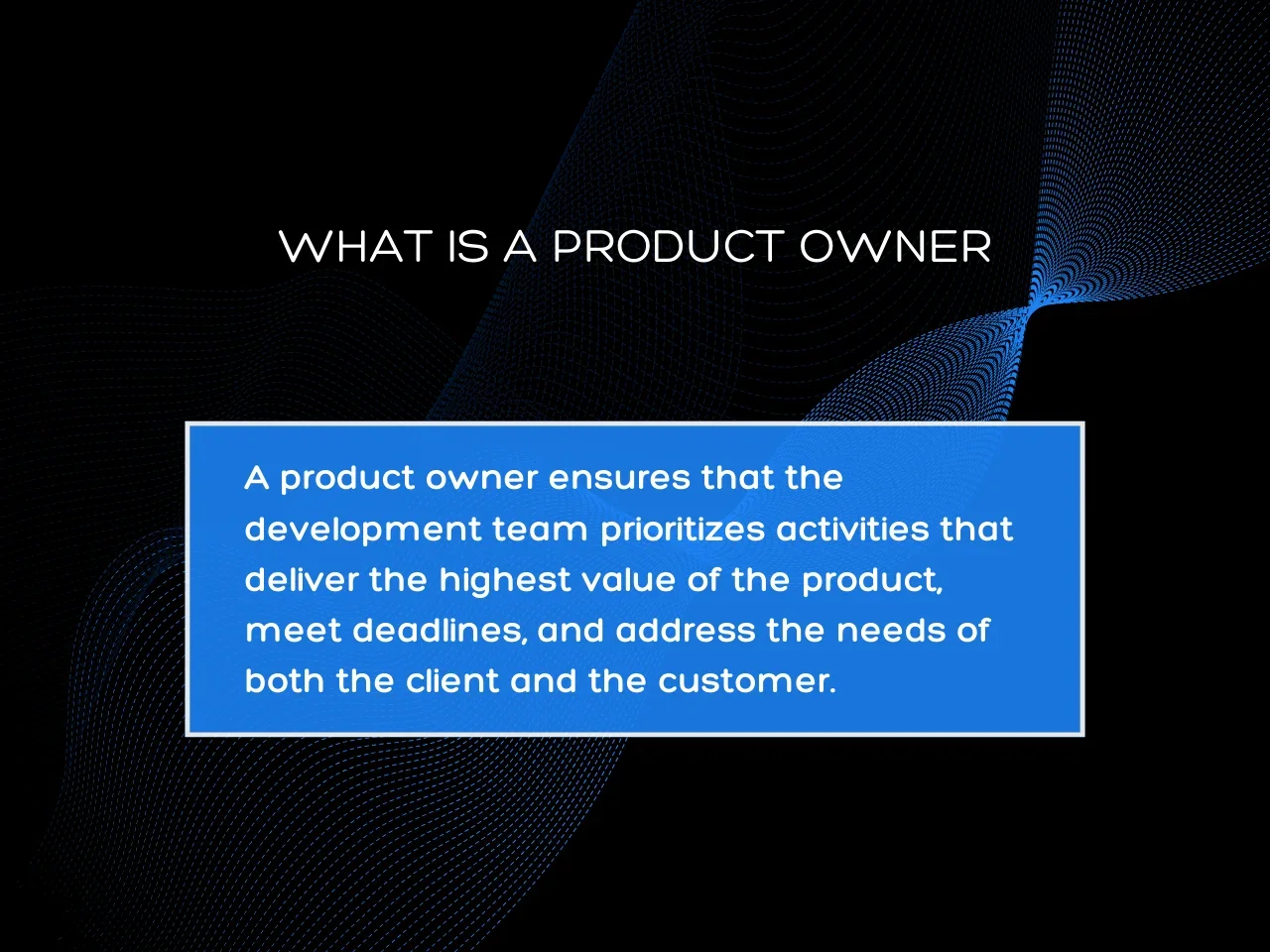
A product owner ensures that the development team prioritizes activities that add the most value to the product, adheres to deadlines, and addresses both the client's and the customer's needs. This role, originating from Scrum project management, is significant in agile environments, as the product owner is responsible for translating big ideas into detailed tasks, setting priorities, and ensuring seamless operations.
Key Responsibilities of a Product Owner
- Breaks high-level product goals into actionable user stories and ensures they are executed effectively.
- Offers insights and feedback to refine and improve development strategies based on team progress and market needs.
- Keeps track of market trends and consumer needs to ensure the product stays relevant and competitive.
- Directs the product development process to align with the product vision and customer requirements, adhering to the scrum framework.
- Creates and maintains a detailed backlog of the work of the development team, including descriptions and requirements.
- Engages in scrum team meetings and ceremonies to ensure alignment and address any issues.
- Balances and prioritizes the needs and demands of various stakeholders to ensure the product meets key objectives.
- Conveys the product vision to the development team and other stakeholders to ensure alignment and focus.
Defining the Product Manager Role
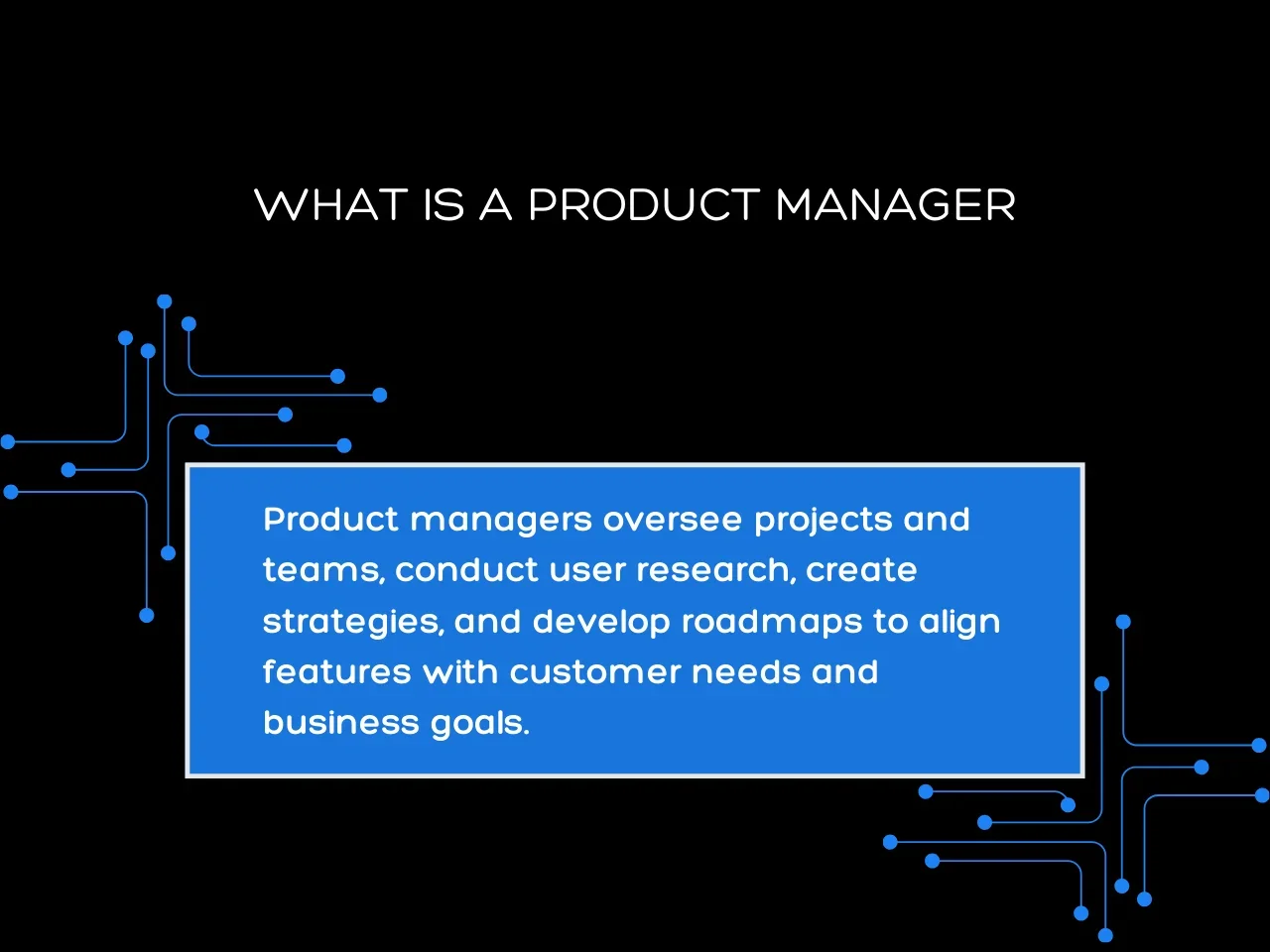
Product managers oversee projects and teams to ensure successful product launches. They conduct user research, create long-term strategies, and develop roadmaps, aligning new features with customer needs and business goals. A good product manager defines success for a product and works with cross-functional teams to achieve it, whether developing new products or repositioning existing ones, including addressing supply chain challenges.
Key Responsibilities of a Product Manager
- Conducts research to understand customer requirements and pain points.
- Gathers and analyzes feedback to improve product features.
- Creates a clear, long-term vision for the product based on market research and customer needs.
- Formulates a strategy that aligns with business goals and outlines how to achieve the product vision.
- Establishes a product roadmap to guide product development, set priorities, and keep the team focused.
- Communicates and collaborates with stakeholders, including senior leadership, to ensure alignment and support for the product strategy.
- Supervises the entire product lifecycle, from ideation to launch, ensuring that milestones are met and quality standards are maintained.
- Works with developers, designers, engineers, and other departments to ensure effective execution of the product strategy.
- Coordinates product marketing efforts, handles customer service, and analyzes product performance to optimize future iterations.
How Do Product Owners and Product Managers Work Together?
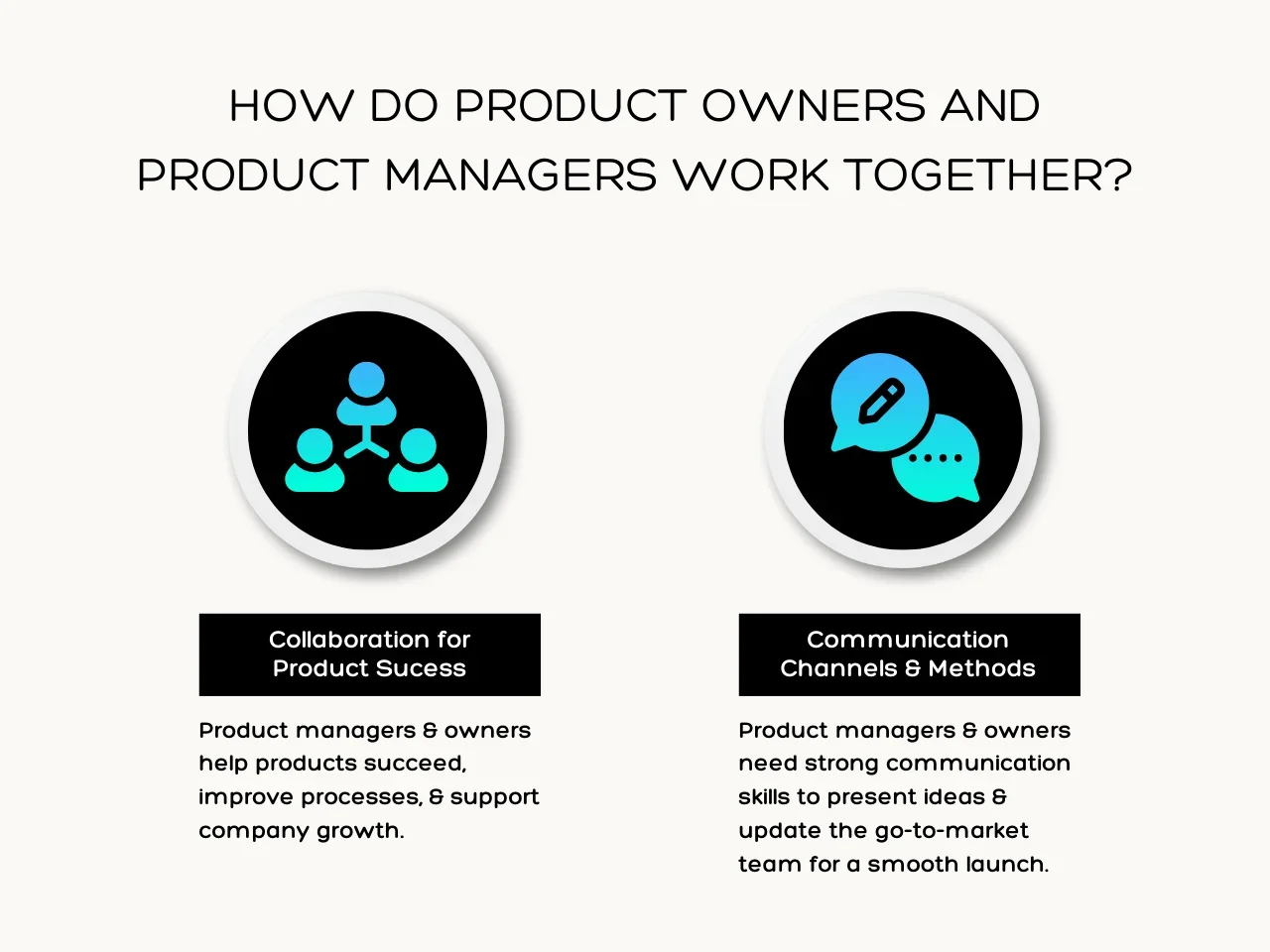
The product manager sets the big-picture vision for the product, and then the product owner turns that vision into specific tasks for the team. Here’s how PM and PO work together during the product development process.
Collaboration for Product Success
Being a product manager or owner can be tough but rewarding. Product managers set the overall vision for the product and make big decisions based on customer needs and team capabilities. They work with various teams to define the product's roadmap and identify its unique selling points.
On the other hand, product owners translate this vision into tangible, actionable tasks for the team. They ensure features are developed on time and meet the required quality standards. They keep things organized and ensure the team knows exactly what needs to be done.
By working together, product managers and owners help their complex products succeed, improve how things are done, and support the company’s growth. Their teamwork significantly impacts the achievement of product goals and drives the company forward.
Communication Channels and Methods
Product managers and owners need strong communication skills to succeed in their roles. To ensure a smooth product launch, product managers must be able to present ideas to senior leaders and share updates with the go-to-market team. They keep everyone informed, from developers to executives, ensuring clear product vision and goals. Good communication helps build a strong team and keeps everyone motivated.
Product owners also play a key role in communication. They translate the product manager’s suggestions for the UX, engineering, and software development teams. This involves managing a backlog of tasks, detailing each step, and ensuring the team understands the required actions.
While product owners typically focus on internal communication, working with managers and department heads, product managers often deal with external stakeholders, including clients and customers.
Product owners and product managers handle different types of stakeholders. Product owners focus on gathering feedback from internal stakeholders like managers and departments and refining the product. They focus on translating the product manager’s vision into detailed requirements and ensuring internal teams build the right features.
Product managers communicate with external stakeholders, such as clients and customers, to align everyone with the project’s goals. They are typically more senior and influence overall business strategy.
Product owners must also explain complex concepts to non-technical stakeholders and make quick decisions to balance competing demands. Integrating input from both internal and external sources helps ensure successful product development.
Impact on Product Development Cycle
The product development cycle involves turning ideas into actual products, from brainstorming to launching. To keep things running smoothly, it’s important to understand everyone’s role. Let’s explore how POs and PMs contribute to the cycle.
Role of Product Owner in Agile Development
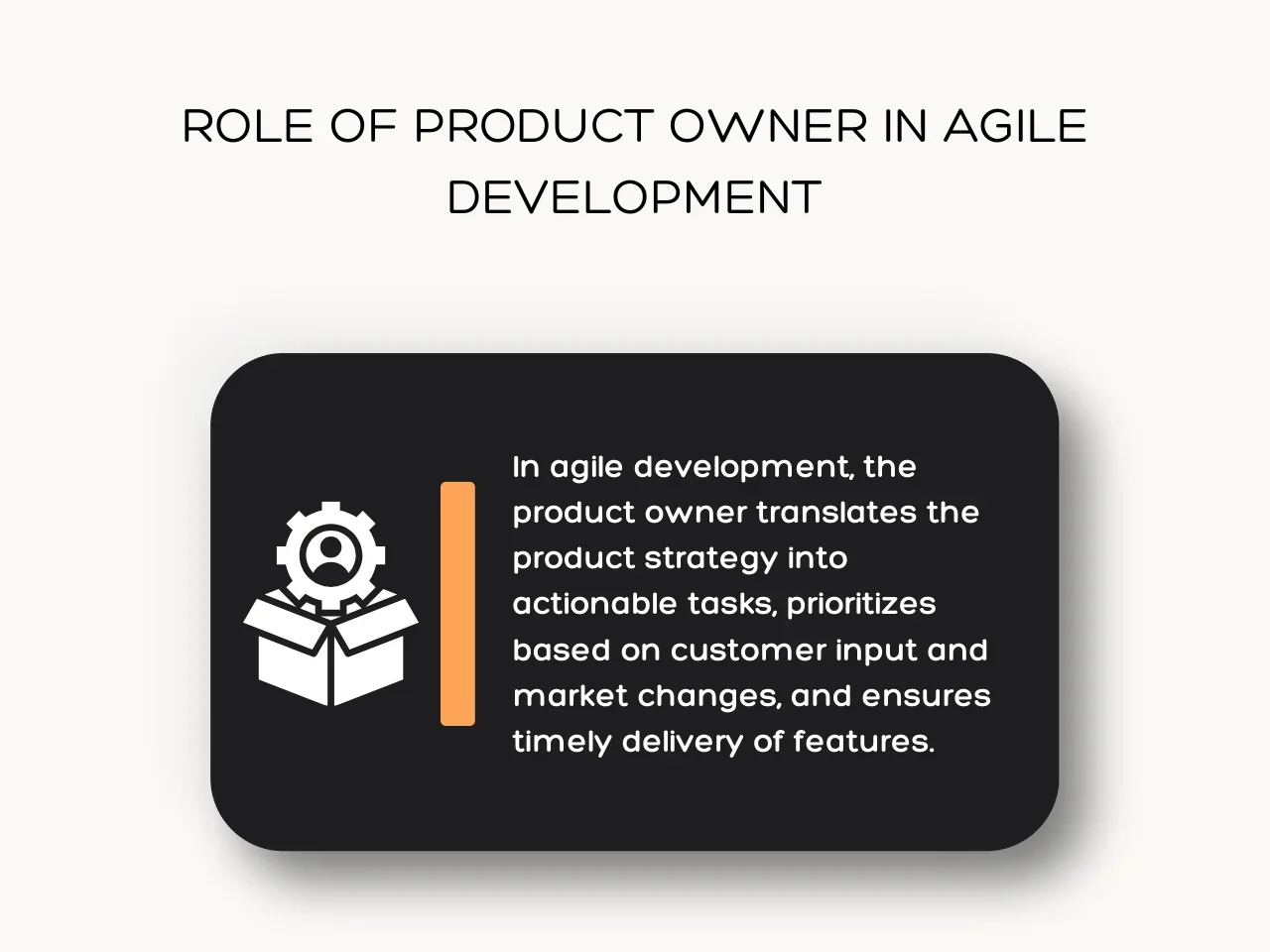
Product owners translate the product strategy into actionable tasks for the development teams. They manage details, participate in meetings, set up demonstrations, and assist with testing to ensure the timely delivery of features and customer stories that align with customers’ needs.
In agile frameworks like Scrum, the product owner prioritizes tasks based on customer input and market changes. They focus on short-term goals while ensuring the team’s alignment with the product’s purpose. Their role is operational, involves direct interaction with the team, and handles some strategic tasks, especially in smaller teams.
Role of Product Manager in Strategic Planning
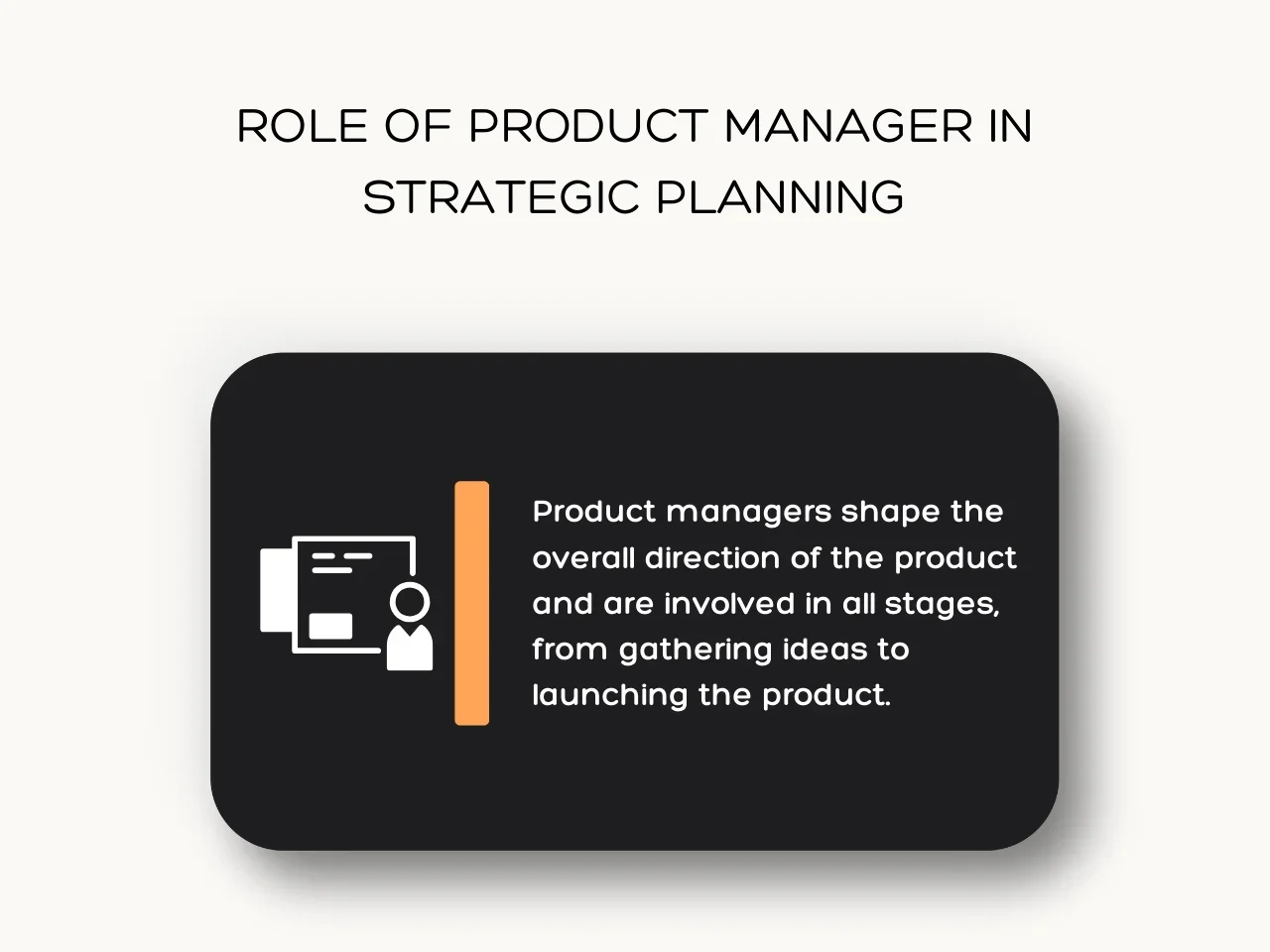
Most of the work of a product manager is making sure the right things are being worked on. If there is misalignment, the ramifications won’t be felt until way down the line. – Chris Raroque
The role of product managers has changed over time. In addition to managing a product from start to finish, they now shape its overall direction. They are involved in all stages of the product’s lifecycle, from ideation and customer research to product launch.
Product managers conduct research to understand what customers want and analyze competitors' performance. With this information, they craft a detailed strategy that covers everything from user experience and technical requirements to features and pricing. This way, the product fits the company’s goals and delivers real customer value.
Bringing Vision to Reality: A Collaborative Effort
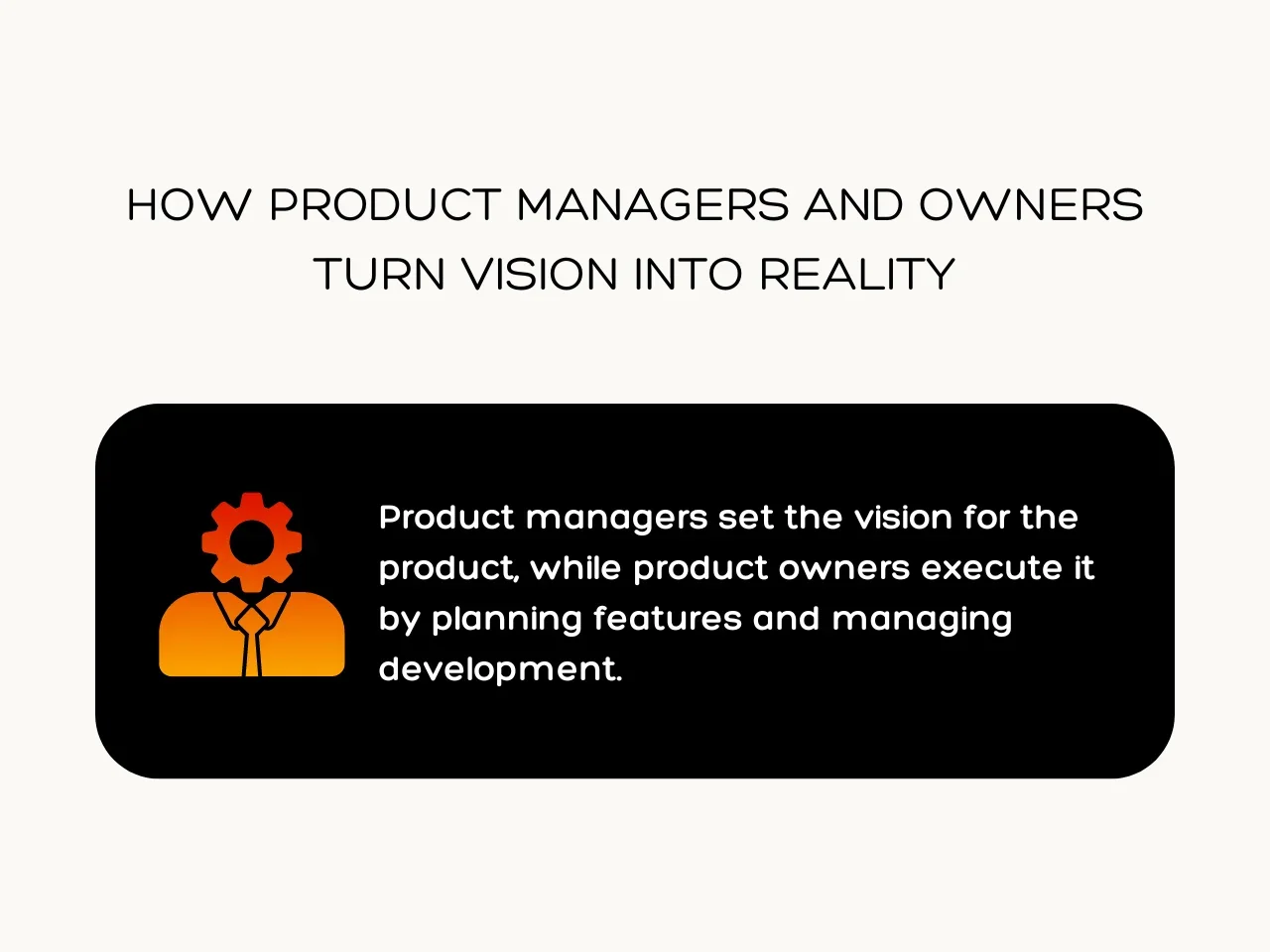
The partnership between the product manager and product owner is integral in transforming a product vision into reality. The product manager sets the overall vision for the product, including market goals and strategic direction, shaped by market research and customer feedback.
Once the vision is set, the product owner takes charge, making decisions on feature prioritization, creating a plan for the development team to follow, organizing tasks, and managing work in sprints. The product owner attends meetings to keep the project on track and solve any issues.
Both roles are essential and overlap in their focus on creating valuable products. The product manager sets the strategic direction, while the product owner ensures the vision is executed well. Finally, good communication helps the development team understand what to build and why.
Measuring Success and Continuous Improvement
Post-launch, product owners and managers are responsible for implementing a clear and ongoing process for evaluating the product's success. This involves collecting user feedback, analyzing product performance, and adjusting based on the data gathered.
Measuring Success
Product managers can measure success qualitatively and quantitatively. Key performance indicators (KPIs) like product usage, customer satisfaction, and financial metrics provide a comprehensive view. On the other hand, qualitative measures include feedback from peers and stakeholders and observations of team interactions and contributions. Techniques like 360-degree reviews offer deep insights into leadership and effectiveness, too.
Continuous Improvement
Continuous improvement depends on systematic methods and a supportive culture. The Plan-Do-Check-Act (PDCA) cycle helps by planning, testing, reviewing, and adjusting improvements. Regular workshops, feedback sessions, and surveys identify enhancement areas and foster innovation. Ensure transparency with team members, celebrate success, and provide ongoing training to drive continuous development and product success.
Key Takeaway
Understanding the various roles involved in product development is key to achieving the desired product outcome for every development team, whether building software applications or physical products. The product manager sets the big-picture goals and aligns them with business needs. Meanwhile, the product owner translates these goals into actionable tasks for the team.
However, these roles may be combined in smaller organizations, leading to potential conflicts in priorities and overspending due to duplicated efforts. Knowing the difference between product owner and product manager and considering the company’s size and long-term goals can avoid inefficiencies and maintain a balanced and cost-effective product development process.
Struggling with unclear roles and project management issues? Aloa offers effective outsourcing strategies to streamline your projects and boost productivity. Our project management framework and top-tier partners ensure your projects align with your goals. With transparent reports and a dedicated U.S.-based product owner, we'll keep everything on track. Drop us a line at [email protected] to achieve seamless project execution.

